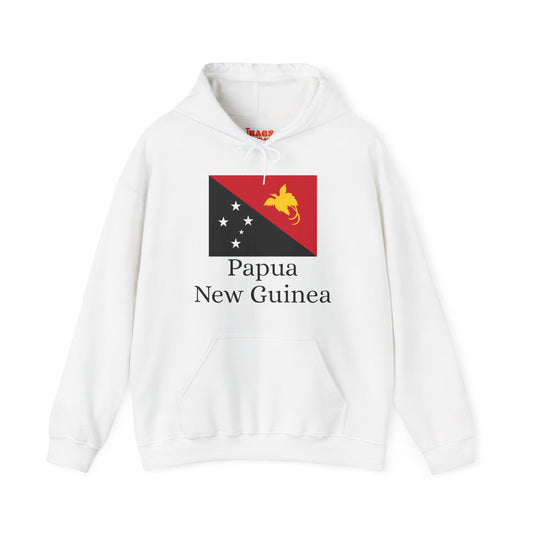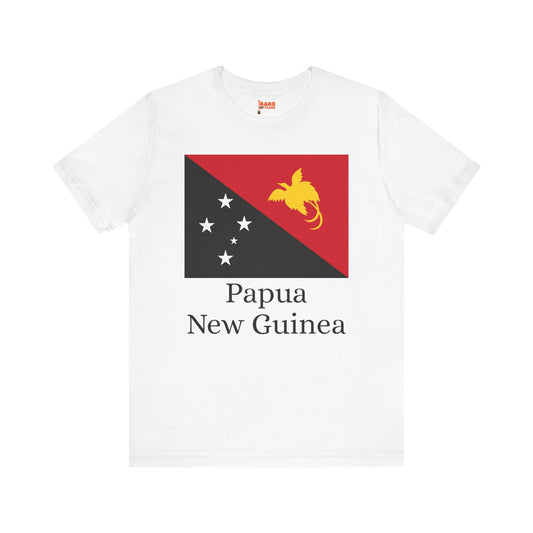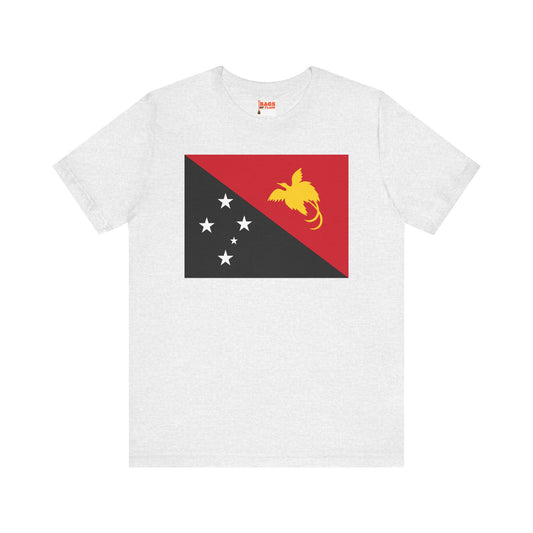-
Papua New Guinea Sweatshirt
Regular price $34.15 USDRegular priceUnit price / per -
Papua New Guinea Flag Sweatshirt
Regular price $34.15 USDRegular priceUnit price / per -
Papua New Guinea Pillow
Regular price $22.65 USDRegular priceUnit price / per -
Papua New Guinea Backpack
Regular price $59.79 USDRegular priceUnit price / per -
Papua New Guinea Leather Patch Hat
Regular price $18.85 USDRegular priceUnit price / per -
Papua New Guinea Mug
Regular price $11.65 USDRegular priceUnit price / per -
Papua New Guinea Trucker Cap
Regular price $14.90 USDRegular priceUnit price / per -
Papua New Guinea Hoodies
Regular price $34.40 USDRegular priceUnit price / per -
Papua New Guinea Hoodies
Regular price $34.40 USDRegular priceUnit price / per -
Papua New Guinea T-shirts
Regular price $22.79 USDRegular priceUnit price / per -
Papua New Guinea Flag on T-shirt
Regular price $22.79 USDRegular priceUnit price / per
Collection: Papua New Guinea
The Papua New Guinea flag symbolizes national pride and identity for the people of this diverse Pacific nation. With its unique design and colors, the flag holds a special place in the hearts of Papua New Guineans. We will delve into the lesser-known facts about the Papua New Guinea flag, exploring its history, symbolism, current relevance, and interesting anecdotes.
Overview of the Papua New Guinea Flag

The flag of Papua New Guinea boasts a striking diagonal bi-color of red and black, divided by a thin, golden line—a nod to the nation's rich cultural heritage and its traditional colors. On the black field sits the Southern Cross, rendered in white stars, a celestial guide for navigators and a symbol of the country's place in the world. Dominating the red field is a stylized rendition of the bird of paradise, synonymous with the nation for its breathtaking beauty and cultural significance among the local tribes. This bird, illustrated in all its glory, represents the nation's fauna and an emblem of its aspirations toward freedom and sovereignty. The choice of elements within the design intricately weaves together the geographical, cultural, and historical threads of Papua New Guinea, creating a flag that is both a beacon of national pride and a canvas narrating the country's journey.
Historical Context of the Flag
The Papua New Guinea flag was officially raised for the first time on July 1, 1971, signaling a significant milestone in the nation's journey towards independence. This event occurred four years before Papua New Guinea fully achieved sovereignty on September 16, 1975, from the Australian administration. The flag's design resulted from a nationwide competition to find a symbol that could encapsulate the country's essence and aspirations.
The winning entry came from Susan Huhume, a 15-year-old Papua New Guinean student whose design seamlessly blended traditional elements with symbols of unity and progress. This moment in history was not just about adopting a national flag; it was a declaration of the country's identity, embodying its people's hopes, dreams, and diverse cultures. Over the years, the flag has remained unchanged, standing as a testament to the enduring spirit and unity of Papua New Guinea amidst the evolving political and social landscape.
Symbolism Embedded in the Flag

The Papua New Guinea flag is a vibrant tapestry of symbols, each chosen for its deep connection to the nation's identity and heritage. The flag's bi-color of red and black holds profound cultural significance, reflecting the traditional pigments used in local art and attire. These colors, symbolic of the country's past and people's connection to the land, frame the narrative of unity and diversity.
The constellation of the Southern Cross, depicted on the black field, serves as a guide for navigators and symbolizes Papua New Guinea's relationship with its Pacific neighbors and its place within the larger tapestry of the southern hemisphere. This celestial motif underscores the nation's journey through time, navigating the complexities of history and modernity.
Predominantly featured on the flag, the bird of paradise, with its elaborate plumage and regal bearing, captures the essence of the country's natural wonders. It is an emblem of the nation's rich biodiversity and a metaphor for the aspirations, independence, and freedom of the Papua New Guinean people. This symbol, revered by local tribes and recognized globally, bridges the gap between tradition and the nation's ambitions for the future, highlighting the pride of Papua New Guinea in its natural heritage and the vibrancy of its cultures.
Current Relevance of the Flag
Today, the flag of Papua New Guinea plays a pivotal role in the nation's collective consciousness and public life, serving as a focal point during significant national events, such as the vibrant celebrations of Independence Day and solemn military commemorations. It stands as a beacon of unity and pride, hoisted high in various locales from government establishments to educational institutions, symbolizing the country's sovereignty and the rich tapestry of its cultural heritage. Discussions around the emblem's representation have surfaced, contemplating adjustments that could more accurately mirror the nation’s vast cultural diversity and evolving identity.
These dialogues underscore the dynamic nature of national symbols, reflecting on how they can best encapsulate the spirit and aspirations of their people in contemporary times. As it flutters against the backdrop of Papua New Guinea's landscapes, the flag continues to be a powerful emblem of nationality, evoking a sense of belonging and solidarity among its citizens. Its presence in international arenas also cements the country's stature on the global stage, heralding its history, values, and aspirations to the world. Engaging with the flag during these events and discussions brings the nation together, reiterating its significance as a piece of fabric and a living symbol of Papua New Guinea’s enduring spirit and unity.
Additional Facts and Flag Etiquette
The Papua New Guinea flag is subject to meticulous protocols emphasizing respect and honor for the national emblem. It is paramount that the flag, when displayed, is kept aloft and clear from making contact with the ground, symbolizing the dignity and sovereignty of the nation. The proper display also dictates that the flag should only be flown at half-mast during nationally recognized periods of mourning, signifying the collective grief and respect for the deceased.
Any modification or alteration of the flag, such as the introduction of new symbols or a change in its color palette, is strictly prohibited, preserving the flag’s original design and symbolism as a sacred representation of the nation’s identity and heritage. These guidelines reflect the profound respect Papua New Guineans hold for their flag and ensure that the emblem continues to be a unifying symbol, evoking pride and a strong sense of national unity. Observing these etiquette rules is essential in fostering an environment of respect around the flag, further cementing its role as an integral part of Papua New Guinea’s cultural and national identity.






















